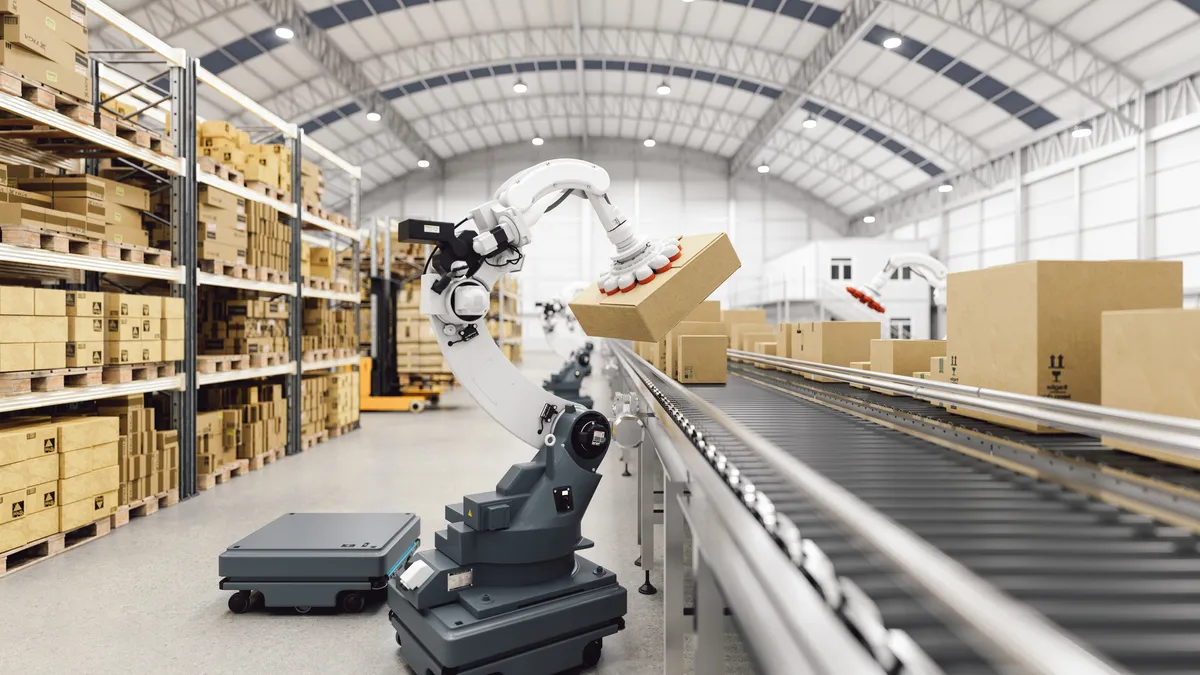There were times throughout the pandemic when Ferrero's popular hazelnut spread Nutella was "selling like hotcakes" — faster than the company could keep up with, Glenn Lawse, vice president of supply chain at Ferrero USA, said at a recent webinar. While the outbreak exacerbated operational issues at the confectionery maker, some had already existed in its business.
"The reality is, even outside the pandemic ... we don’t always get information fast enough to have visibility to make the right decisions," Lawse said. "We have a lot of partners we work with ... they all have their own bits and pieces of information, and trying to make sure you make the best decision with all that information is very hard to achieve."
The need to make better informed decisions led to a partnership in 2019 between Ferrero and Alloy, a 5-year-old software service company, to help the company improve the efficiency of its supply chain and reduce food waste.
Alloy works with CPG companies using a data platform to map the journey from manufacturer to end consumer, monitoring businesses' day-to-day operations, while analyzing shifts in consumer demand.
"We don’t always get information fast enough to have visibility to make the right decisions."

Glenn Lawse
Vice president of supply chain, Ferrero USA
That system helped Alloy identify cost-cutting measures that could have a potential bottom line impact of 5% or more a year for Ferrero USA during its pilot program with the company. Lawse said in an email it plans to "exceed that prediction." The company is now increasing the number of customers it pulls data from in grocery, dollar and drug stores.
"When we could provide more information, it really helps so we can see even a better view and dig down deep to see: they're all ordering, but who really is sitting on the supply and who has zero or major in-stock problems at the retail level," Lawse said.
Data puts inventory in the right place at the right time
Roberto Carli, chief customer officer at Alloy, said the company first connected with Lawse at a conference and the two worked together to help Ferrero connect the dots across sales and supply chain practices to get a better grip on its consumer demand. They looked to resolve two major issues through this data: overstock, which leads to food waste, and out of stock, which leads to lost sales.
"The No. 1 problem that they care about, probably the one that's even before waste, is lost sales," Carli said.
Alloy analyzes how quickly products are purchased and redistributes inventory from one location to another to avoid unnecessary production and prevent food waste, Carli said.
"We're now able to drill all the way down to a store level to see exactly what is happening on the shelves to better gauge potential demand," Lawse said. "This information helps us check our assumptions and prevent situations in which we have our products sitting in transport in warehouses at the wrong time or the wrong place."
Lawse said during the webinar that this can especially help product launches in retail locations where the company doesn’t already have a history. It allows Ferrero to more quickly adjust to demand, especially because a number of its products are not manufactured locally, but in places like Italy.
Reducing waste, streamlining the supply chain
More companies are putting more money and effort toward food waste initiatives. The Consumer Goods Forum launched a group in August led by CEOs at 14 of the biggest retailers and manufacturers, like General Mills, Kellogg Company and Nestlé, to cut global food loss in half per capita by 2025. Then just last month, nearly 200 companies committed to cutting food waste in half by 2030.
Reducing waste through the supply chain, however, can create its own set of potential issues. If companies end up with too little product, there could be an empty shelf, which leads to lost sales and rushing inventory, Carli said.
A lot of the work Alloy does is quantifying the amount of lost revenue, by summing up the cost of lost sales, the cost of waste and the cost of sometimes inefficient transportation.
"The bigger trend we're noticing is companies want to create more unified and more reactive supply chains," Carli said. Then, he said, cutting food waste just comes as a result of streamlining the supply chain. "Typically, food waste comes as one of the outputs of the process that they want to put together."
"We're a food product. Ferrero Rocher, as you remember, the small pralines that are shaped like a golf ball size, they do not improve with time. They are not wine."

Glenn Lawse
Vice president of supply chain, Ferrero USA
There is a lot of variability in supplying food, especially with seasonality. Carli said if anything is branded for holidays like Valentine's Day or Christmas, companies can end up with a lot more waste because there's a clear cut off compared to a product that has everyday packaging.
Lawse said products in the shape of an Easter bunny or a Christmas tree do not have high demand the day after the holiday is over. He said it's necessary to monitor demand for all of its products so that they limit waste.
"We're a food product. Ferrero Rocher, as you remember, the small pralines that are shaped like a golf ball size, they do not improve with time. They are not wine. The reality is, it's very important for us to move through those kinds of things very fast because we want the customer to have the best experience with it," Lawse said.
About one-third of food produced goes to waste globally, which totals about 1.3 billion tons annually, according to data from the United Nations. The organization also estimated food waste adds about 3.3 billion tons of greenhouse gases into the atmosphere every year.
The loss can cost companies a lot. The total financial cost of food waste is estimated to be about $218 billion, according to ReFed.
Carli said Alloy is seeing a trend of more companies aligned in terms of intention in wanting to be more sustainable and reducing food waste, but there are technical challenges and obstacles. He said some companies are utilizing data in a way that is not reactive enough, and they don't have data that's granular or real-time.
"There's still a lot of companies that are not utilizing this data at all," Carli said.























